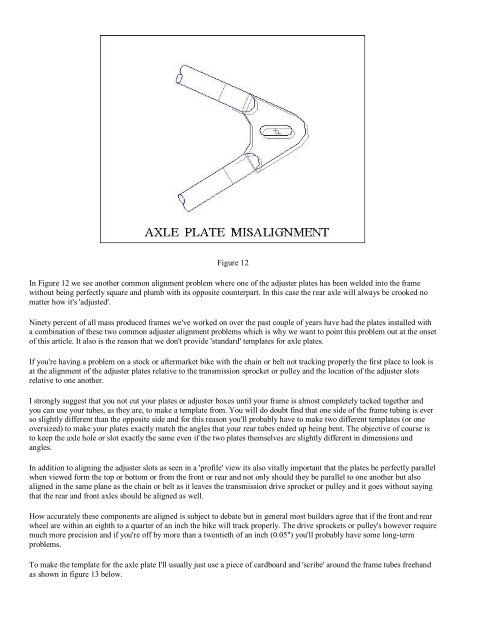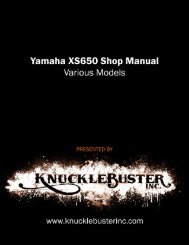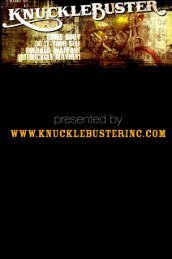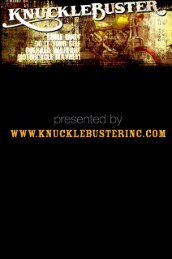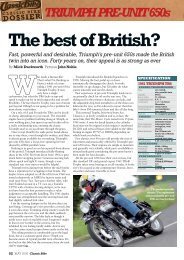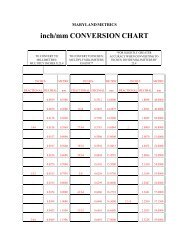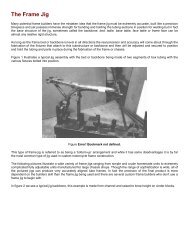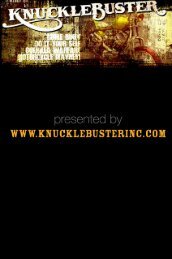Old School Chopper Frame Fabrication - Knucklebuster
Old School Chopper Frame Fabrication - Knucklebuster
Old School Chopper Frame Fabrication - Knucklebuster
You also want an ePaper? Increase the reach of your titles
YUMPU automatically turns print PDFs into web optimized ePapers that Google loves.
Figure 12<br />
In Figure 12 we see another common alignment problem where one of the adjuster plates has been welded into the frame<br />
without being perfectly square and plumb with its opposite counterpart. In this case the rear axle will always be crooked no<br />
matter how it's 'adjusted'.<br />
Ninety percent of all mass produced frames we've worked on over the past couple of years have had the plates installed with<br />
a combination of these two common adjuster alignment problems which is why we want to point this problem out at the onset<br />
of this article. It also is the reason that we don't provide 'standard' templates for axle plates.<br />
If you're having a problem on a stock or aftermarket bike with the chain or belt not tracking properly the first place to look is<br />
at the alignment of the adjuster plates relative to the transmission sprocket or pulley and the location of the adjuster slots<br />
relative to one another.<br />
I strongly suggest that you not cut your plates or adjuster boxes until your frame is almost completely tacked together and<br />
you can use your tubes, as they are, to make a template from. You will do doubt find that one side of the frame tubing is ever<br />
so slightly different than the opposite side and for this reason you'll probably have to make two different templates (or one<br />
oversized) to make your plates exactly match the angles that your rear tubes ended up being bent. The objective of course is<br />
to keep the axle hole or slot exactly the same even if the two plates themselves are slightly different in dimensions and<br />
angles.<br />
In addition to aligning the adjuster slots as seen in a 'profile' view its also vitally important that the plates be perfectly parallel<br />
when viewed form the top or bottom or from the front or rear and not only should they be parallel to one another but also<br />
aligned in the same plane as the chain or belt as it leaves the transmission drive sprocket or pulley and it goes without saying<br />
that the rear and front axles should be aligned as well.<br />
How accurately these components are aligned is subject to debate but in general most builders agree that if the front and rear<br />
wheel are within an eighth to a quarter of an inch the bike will track properly. The drive sprockets or pulley's however require<br />
much more precision and if you're off by more than a twentieth of an inch (0.05") you'll probably have some long-term<br />
problems.<br />
To make the template for the axle plate I'll usually just use a piece of cardboard and 'scribe' around the frame tubes freehand<br />
as shown in figure 13 below.


